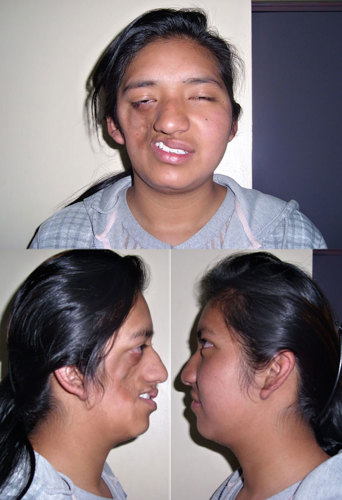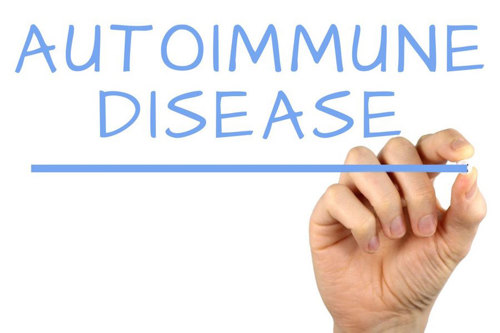
Is there any evidence that Parry Romberg Syndrome is genetic?
November 1, 2016

- Related Topic:
- Autoimmune disease
A curious adult from the U.S. asks:
“Is there any evidence that Parry Romberg Syndrome is genetic?”
Mostly no. To date, there is very little evidence that Parry Romberg Syndrome is genetic.
There are a few published studies that point towards it being an autosomal dominant genetic disorder (Anderson et al. 2005, Lewkonia & Lowry 1983). Which means that if you get a copy of the disease-causing gene from just one of your parents, you can get the disease.
But most of the time it doesn’t really follow this pattern. In the vast majority of cases how or why people develop Parry Romberg Syndrome is unclear.
What is Parry-Romberg Syndrome?
Parry-Romberg Syndrome is a rare disease where the skin and soft-tissue on half of your face slowly starts to melt away.
Signs include a slow loss of skin, fat, connective tissue, muscle, and bone. This often gives people a “sunken-in” appearance in their eye and cheek, and makes it look like their face is shifting to one side, usually to the left.
The disease is progressive, meaning that it gets worse over time.
And it can also cause other problems like migraines, seizures, or severe face pain. If it progresses far enough, it can start to affect a person’s eyesight and ability to chew food.
The severity of symptoms differs between people, but most start to experience symptoms before they’re 20. It also tends to happen more often in women.

What Causes it?
There doesn’t seem to be a general “rule” for who gets Parry Romberg Syndrome or why (despite the few genetic studies mentioned above).
But there are some theories.
One theory is that the person’s own body mistakenly attacks the tissue in their face, something called an autoimmune disease.

Normally your immune system protects you from getting sick by attacking viruses or bacteria. But sometimes, people’s immune systems get confused and attack their own healthy cells instead.
Autoimmune responses like this can cause something as simple as a common allergy to something more severe like lupus, type I diabetes, or rheumatoid arthritis.
Other theories are linked to a viral or bacterial infection, inflammation in the brain, or a failure of their nervous system.
Is it a Life-Threatening Disease?
Luckily, Parry-Romberg Syndrome is not a life-threatening disease, and although symptoms progress over time, the disease eventually stabilizes.
Is There a Cure? Can You Treat It?
So far, there isn’t a cure. But at least in mild cases there can be a treatment. Reconstructive surgery can fix the cosmetic tissue damage in their face.
A lot of reconstructive surgery involves transplanting a patient’s own fat from another part of their body (under arms, hips, thighs, or “love-handles”) to their face.
But most of the time physicians won’t operate before the disease has stabilized. They don’t want to transplant new tissue into a person’s face if it’s going to immediately melt away.
In fact, one surgeon said that of the ~400 facial reconstructive surgeries he completed more than half failed to “stick”.
In the successful case of a little girl named Christine Honeycutt, her surgeon Dr. John Siebert used an innovative method for reconstructive surgery. And it seemed to work!
What was the difference? Instead of just transplanting fat directly into Christine’s face, Dr. Siebert made sure to transfer tissue that had working blood vessels as well.
The idea seems to be that when the tissue was transplanted, the blood vessels merged with the blood vessels already present in her face. This potentially helped blood flow, transporting lots of oxygen, nutrients, and healing factors directly to the site of her surgery.
Other physicians are transplanting stem cells along with the fat to see if that improves patient outcomes.
Although seemingly promising, we’ll need to see the results from many more surgeries before we’ll know if either of these methods is truly better.

Rare Disease Research Wanted!
It is hard to get to the bottom of rare diseases like Parry-Romberg Syndrome because there aren’t a lot of people to study. And not a lot of money goes into researching it. We just don’t have enough data or numbers to study it properly.
It’s like an investigator trying to solve a crime based on only one piece of evidence. It’s hard to put the story of an entire crime together with only one clue! The more clues you have, the clearer the story becomes.
Like other rare diseases, there is an enormous need for more research on the causes and future treatment of Parry-Romberg Syndrome. With that extra research, we may learn why it happens, and how to best treat it.

Author: Dr. Lauren Liddell
When this answer was published in 2016, Lauren was a postdoctoral fellow in the Department of Genetics, studying how coral genetically responds to climate change in John Pringle’s laboratory. Lauren wrote this answer while participating in the Stanford at The Tech program.
 Skip Navigation
Skip Navigation
